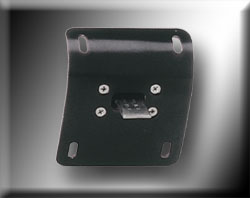Lift Detector
Click here to request additional info about this product

The foundation of Safe Flight’s Stall Warning systems is the Lift Detector. This was the first and still the industry standard for stall warning in light aircraft. The system consists of a small tab or vane which senses the change of the stagnation point on the wing and an alerting device used for stall warning. The principal of operation is described below:
As the aircraft’s wing moves through the air, it divides the approaching air mass into two airflows. The center of this flow division is a narrow region of low pressure known as the stagnation point, and its position on the wing bears a definite and repeatable relationship to Angle of Attack. The stagnation point moves on the wing undersurface as Angle of Attack changes. Decreasing Angle of Attack moves the stagnation point forward; increasing Angle of Attack moves it aft, to a maximum aft position at which stall occurs and the wing loses lift.
Safe Flight’s lift detector is designed to detect the location of the stagnation point on the wing and relay this information to the pilot to aid him in awareness that he is nearing a stall. The lift detector, when properly installed and adjusted on the wing, senses the location of the stagnation point by means of a flat, spring-loaded vane which protrudes into the airflow on the wing undersurface. Airflow from the stagnation point moves the vane against the internal spring force and displaces the vane relative to the stagnation point position. The location is carefully chosen on the wing so that air which flows aft from the stagnation point position at the approach Angle of Attack deflects the vane aft a specified amount.
When speed is decreased, the stagnation point moves aft, decreasing the force against the forward face of the vane, and allowing the internal spring to move the vane forward. If speed is decreased sufficiently to allow the stagnation point to move aft of the vane, the vane is forced forward. The forward movement of the vane closes a switch contact which activates stall warning annunciation in the cockpit. At some further aft location of the stagnation point, the wing will reach stall Angle of Attack. Hence, forward movement of the vane which closes the switch, signifies that the aircraft is approaching a stall.The Lift Detector has been installed in hundreds of thousands of light aircraft. While the principles apply to all fixed wing aircraft, Lift Detectors are found primarily on piston powered aircraft. The turbine powered aircraft typically select a more complex Stall Warning System.
Variations of the Lift Detector include:
1) Contoured mounting plates to precisely fit the wing curvature.
2) Heated mounting plates and vanes for protection in icing conditions.
3) Pigtail connector or screw terminals.
Other variations include the plate’s surface treatment: bare aluminum, polished aluminum with clear anodize, standard irridite and black irridite.
For more information on other AoA/Stall Warning products follow the links below:

